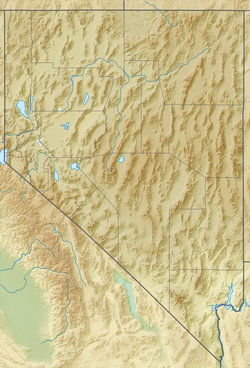| Flowery Range | |
|---|---|
| Highest point | |
| Elevation | 2,237 [2] m (7,339 ft) |
| Geography | |
| Country | United States |
| State | Nevada |
| District | Storey County |
| Range coordinates | 39°23′32.689″N119°31′20.633″W / 39.39241361°N 119.52239806°W |
| Topo map | USGS Chalk Hills |
The Flowery Range is a mountain range associated with the Virginia Range [3] in Storey County, Nevada. [1]
The range was so named on account of wildflowers which bloom when watered by melting snow. [4]
